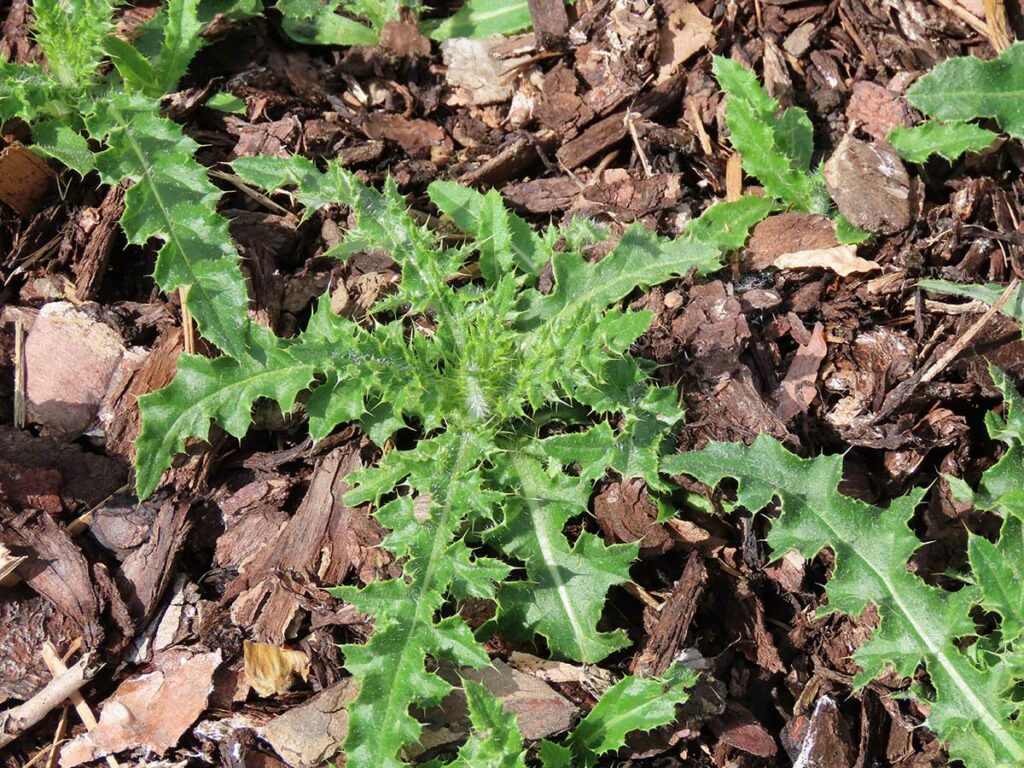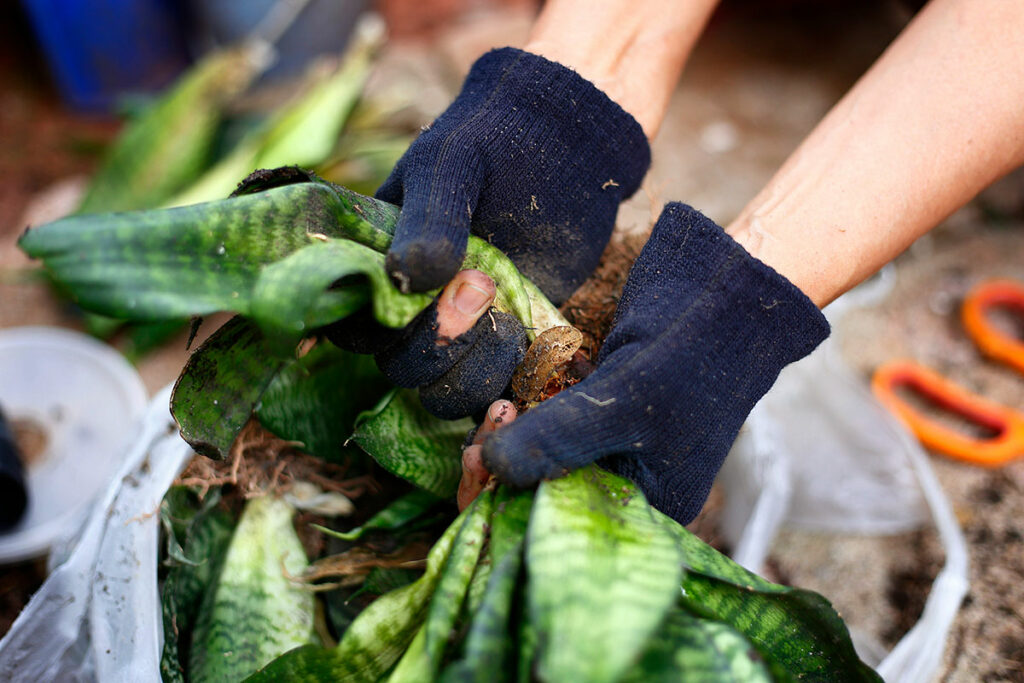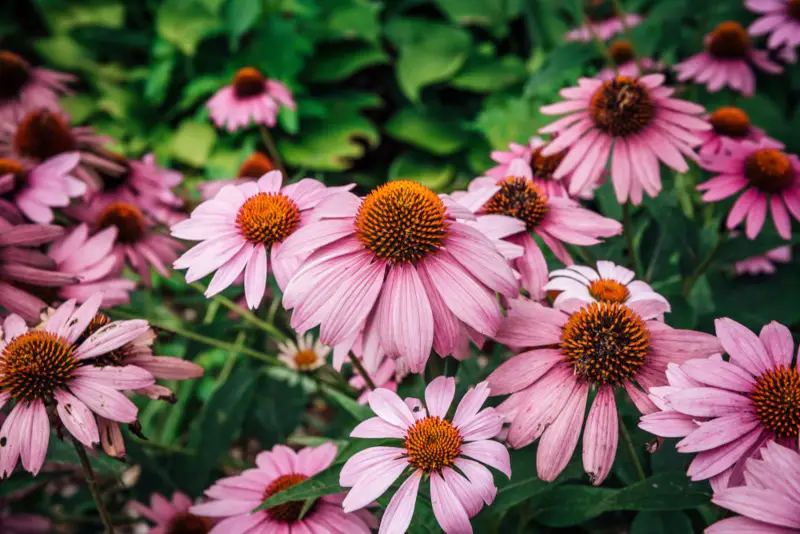
A well-maintained garden is a true delight, providing a space to relax, enjoy nature, and grow your favorite plants. However, the presence of weeds can quickly turn this dream into a nightmare, as they compete for resources and spread rapidly, disrupting the harmony of your garden. In this article, we will explore ten tips to help you effectively manage and eliminate weeds, ensuring your garden remains a beautiful and productive haven.
Identifying the different types of weeds that plague your garden is the first crucial step to control them. With a wealth of techniques and tools at your disposal – from organic approaches to chemical herbicides – you can choose the most suitable and effective method for your specific situation.
Furthermore, by cultivating a healthy garden and employing manual weed control techniques, you can prevent future weeds from taking root and maintain the pristine appearance of your outdoor space.
Key Takeaways
- Knowing the types of weeds in your garden is essential for effective control and elimination.
- Combine various tools, techniques, and approaches like chemical or organic methods to best suit your situation.
- Cultivating a healthy garden and employing preventive measures can help keep your outdoor space weed-free.
Identifying Common Weeds

Weeds can be a gardener’s worst nightmare, but being able to identify the common culprits in your garden can help you create an effective plan to eliminate them. Here’s a list of some of the most common weeds you might come across:
- Dandelions: These weeds are recognizable by their bright yellow flowers and fluffy seed heads. Their deep taproots make them tricky to remove completely.
- Bindweed: Known for its slender, winding vines, bindweed can quickly take over your garden. Its trumpet-shaped white or pink flowers are a sneaky disguise for this invasive plant.
- Chickweed: With small, star-like flowers, chickweed is a low-growing plant that can quickly form a dense mat in your garden.
- Quackgrass: This perennial grass has a creeping, rhizomatous root system, making it difficult to eradicate. Its long, thin blades make it easy to distinguish from your desired grass.
Other weeds that might be causing issues in your garden include plantain, crabgrass, stinging nettle, dock, purslane, pigweed, Canada thistle, and Japanese knotweed.
Pay attention to these distinctive characteristics:
- Plantain: Broad, oval leaves with parallel veins, and tall, slender flower spikes.
- Crabgrass: A spreading, low-growing grass with bluish-green leaves and a central stem.
- Stinging nettle: Covered in tiny hairs that cause irritation when touched, this weed has toothed leaves and small, greenish-white flowers.
- Dock: Large, broad leaves with a reddish tinge and tall, slender flower spikes.
Some more weeds you should keep an eye out for are nutsedge, creeping Charlie, and ragweed. They have unique appearances like:
- Nutsedge: It resembles grass, but has a triangular stem and yellow or purple flowers.
- Creeping Charlie: This weed sports round, scalloped leaves and small, blue-purple flowers. It can rapidly spread across your garden via its creeping stems.
- Ragweed: Known for causing hay fever, ragweed is an annual weed with greenish flowers and deeply lobed leaves.
Remember, weeds can be categorized into annual and perennial varieties, which behave differently and may require specific methods for effective control. Knowing these details can help you tailor your weed-fighting strategy and keep your garden looking its best.
Tools and Techniques for Weed Removal

When it comes to getting rid of weeds in your garden, there are several tools and techniques that can help make the process easier. In this section, we’ll cover some of the most effective methods for removing garden weeds.
Digging out weeds: One of the simplest ways to tackle garden weeds is by digging them out with a trowel or a spade. This method works best for larger weeds, especially those with deep roots. To do this, insert the tool into the soil around the weed, making sure to go deep enough to reach the root system. Then, carefully lift the weed out, taking care not to damage the surrounding plants.
Using a hoe: A hoe is a versatile weeding tool that can help you remove weeds from your garden quickly and efficiently. By using an oscillating stirrup hoe, you can cut the weeds off just below the soil surface. This method is ideal for clearing larger areas with shallow-rooted weeds.
Garden fork and hand trowel: For smaller weeds or those growing in tight spaces, a garden fork or hand trowel can come in handy. These tools allow you to loosen the soil around the weed, making it easier to remove them without causing damage to nearby plants.
Weeding tools: There are several specialized weeding tools available on the market, designed specifically for removing garden weeds. Some popular options include the oscillating stirrup hoe, the garden fork, and the hand trowel. These tools can help you tackle even the most stubborn and hard-to-reach weeds.
Remember, consistency is key when it comes to weed control. By regularly using these tools and techniques, you can keep your garden weed-free and looking its best. Happy weeding!
Organic Weed Control Methods

Organic weed control is a great way to maintain a healthy garden without the use of harmful chemicals. Here are some easy and effective methods that you can try:
Mulching: Using organic mulch, such as straw or compost, helps suppress weeds by blocking sunlight and making it difficult for them to grow. Spread a layer of mulch around your plants, leaving a small space around the stems to avoid rot.
Newspaper: Lay down sheets of newspaper in your garden, overlapping them to create a barrier against weed growth. Afterward, cover the newspaper with a layer of organic mulch to disguise it and help hold it in place.
Weed-Free Mulch: When using mulch to prevent weeds, make sure the source is weed-free, like wood chips or bark, to avoid introducing new weed seeds into your garden.
Pulling Weeds: Regularly pull weeds by hand, making sure to remove the entire root system. This method is most effective when the soil is moist, as it’s easier to pull out the entire weed.
Boiling Water: Pouring boiling water directly onto weeds can be an effective way to kill them. This method works best for weeds growing in cracks or along pathways.
Vinegar: A homemade weed killer can be made using vinegar, which helps remove weeds by drawing moisture out of their leaves. Spray a solution of white vinegar and water directly onto the weed, being mindful to avoid contact with your desired plants.
White Clover: Planting white clover in your lawn or garden creates a low-maintenance ground cover that competes with weeds for nutrients and space, effectively suppressing their growth.
Remember that consistent prevention is key to maintaining a weed-free garden. Regularly check your garden for new weeds and address them promptly to keep them from taking over. By using these organic weed control methods, you’ll be able to enjoy a beautiful and healthy garden.
Chemical Herbicides and Their Application
Using chemical herbicides can be an effective method in controlling weeds in your garden. When dealing with troublesome plants like poison ivy or stubborn perennial weeds with taproots, using the right herbicide can save you time and effort.
Pre-emergent herbicides are best applied early in the season to prevent the germination of annual weeds. You can use them on your lawn, which will help maintain a weed-free area without harming existing grass. While pre-emergent herbicides work well on annuals, they are less effective on established perennial weeds.
Post-emergent herbicides can be applied throughout the growing season to control actively growing weeds. Choose a selective herbicide that targets specific weeds without damaging your desired plants. Make sure to read the label and follow the application instructions carefully to ensure the safety of your property and surrounding plants.
When applying chemical herbicides, consider these tips:
- Be aware of the weather: avoid applying herbicides on windy days or before heavy rain to prevent drift or runoff.
- Protect yourself: wear gloves, safety goggles, and long sleeves while handling chemicals.
- Use a dedicated sprayer for herbicide application to avoid cross-contaminating other garden chemicals.
Remember, it’s essential to use herbicides responsibly and as part of an integrated lawn care approach. By combining chemical methods with other weed control techniques, you can maintain a healthy, beautiful garden.
Cultivating a Healthy Garden to Prevent Weeds

A well-maintained garden can go a long way in preventing weeds from invading your space. By focusing on the health of your garden’s soil and plants, you can create an environment that makes it difficult for unwanted species to thrive. Here are some tips to help you cultivate a healthy garden and keep weeds at bay:
Provide optimal soil conditions. Take the time to enrich your garden’s soil with essential nutrients and organic matter. A healthy soil provides a strong foundation for your plants and flowers to grow, making it harder for weeds to take root. You can achieve this by incorporating compost, aged manure, or other organic materials into your soil.
Ensure adequate sunlight and space for your plants. Proper spacing and access to sunlight is crucial for the growth of your plants and flowers. By planting your seedlings with appropriate distances in between, you allow them to develop vibrant foliage and compete with weeds for sunlight. Make sure to consult the recommended spacing guidelines for each plant species.
Choose plants that are compatible with your garden’s environment. Selecting plants, flowers, and grasses that are native or well-adapted to your area can contribute to a flourishing garden. These species are likely to be more resistant to pests and diseases, and they will create a healthy ecosystem that deters weeds.
Employ mulching techniques to retain moisture and suppress weeds. Mulching can benefit your garden in several ways. Not only does it help with moisture retention and prevent soil erosion, but it also acts as a physical barrier, making it difficult for weeds to establish. Opt for an organic mulch, such as wood chips or straw, as they break down over time and enhance soil nutrient content.
Invite beneficial wildlife into your garden. Encourage the presence of wildlife that prey on weed seeds, such as birds and insects. Install birdhouses, birdbaths, or insect hotels to create habitats for these helpful creatures. This can contribute to maintaining a balanced ecosystem, making it more challenging for weeds to thrive.
Integrate companion planting techniques. Pairing certain plants together can provide multiple benefits, including weed suppression. For example, some plants release chemicals that naturally inhibit weed growth, while others contribute to the health of their neighbors by attracting pollinators or deterring pests. Research which plant combinations work best in your garden, and use these pairings to prevent weeds from spreading.
By following these tips, you can create a thriving and healthy garden that naturally discourages the growth of weeds. Taking preventive measures and focusing on the overall health of your garden is key to keeping unwanted species at bay.
Manual Weed Control Techniques

Gardening can be a rewarding hobby, but dealing with weeds can be a pesky chore. Fortunately, there are some manual weed control techniques at your disposal.
First, identify the type of weeds you’re dealing with. Look for characteristics like taproots (long, thick roots) or rhizomes (underground stems). For example, ground ivy has a sprawling growth habit with rhizomes, while bull thistle has a taproot. Knowing your enemy will help you effectively remove these invasive weeds from your garden.
When it comes to flower beds, staying vigilant with your weeding routine is crucial. Gently pull the weeds from the soil, making sure to remove the entire root to prevent regrowth. It can be helpful to weed after a rainfall when the soil is soft and moist, making it easier to extract the entire root system.
Landscape fabric can be an ally in your quest to keep your garden weed-free. This fabric acts as a barrier, preventing new weeds from taking root in your garden. Simply lay the fabric in your flower beds or beneath pathways, taking care to overlap the edges to block out invasive plants.
Hand tools like trowels and weed forks can also come in handy when removing stubborn weeds. Use these tools to dig around the root of the weed, loosening the soil and enabling you to pull it up with more ease.
Occasionally, you may come across stubborn or persistent weeds that require a stronger approach. If this happens, consider using salt. Dissolve two cups of salt in one gallon of water and carefully pour or spray the solution onto the weed, taking care not to douse surrounding plants. This saltwater solution will effectively kill the weed, so exercise caution when using it near your prized plants.
Remember, the key to managing weeds in your garden is staying consistent in your efforts. Regularly inspect your garden for unwanted intruders and take action when you spot them. With a little persistence and these manual weed control techniques, you can maintain a beautiful, weed-free garden.
Managing Lawn Weeds

A well-maintained yard can be a point of pride and joy, but pesky lawn weeds can obstruct your vision of a beautiful garden. Don’t worry! Here are some friendly tips to manage those invaders and maintain a healthy lawn.
1. Choose the right grass seed: Start with selecting a high-quality grass seed that’s suitable for your local climate and soil type. Healthy, thick grass will leave little room for weeds to grow.
2. Mow at the proper height: Mowing your lawn at the correct height helps grass outcompete weeds. Keep your grass longer in summers, and shorter during winter months. Longer grass also helps conserve water, protect the soil from the sun, and encourage deeper root growth.
3. Regular lawn care: Aerate, dethatch and overseed your lawn annually to keep it vibrant and less susceptible to weeds. Aerating improves air circulation and reduces soil compaction, while dethatching and overseeding lead to a denser grass coverage.
4. Water deeply and infrequently: Water your lawn to a depth of 4-6 inches every week, rather than daily shallow watering. This schedule helps grass develop deeper roots and discourages shallow-rooted weeds.
5. Pre-emergent treatments: Apply pre-emergent herbicides in early spring to prevent weed seeds from germinating in your lawn. Timing is crucial, so be sure to follow the product label directions carefully.
6. Target perennial weeds: Perennial weeds like dandelions and thistles can be quite stubborn. If these weeds are not widespread, consider pulling them by hand or using a weeding tool. Make sure to remove the entire root system to prevent regrowth.
7. Spot treatments: For more persistent weeds, apply a selective post-emergent herbicide to target only the weeds and not harm your grass. Simply follow the product’s instructions for the proper application rate and method.
8. Consistent lawn maintenance: Keep a regular schedule for mowing, watering, and fertilizing your lawn to ensure it remains strong against weeds. A well-nourished lawn will have fewer issues with weeds.
9. Organic solutions: If you prefer chemical-free approaches, try using organic methods such as corn gluten meal as a pre-emergent or vinegar-based solutions for spot treatments.
10. Seek professional help: If your lawn weed problem becomes overwhelming, consider consulting a lawn care professional for expert advice and treatment options.
By diligently following these tips, you’ll be well on your way to managing weeds and maintaining a gorgeous, thriving lawn.
Tips for Keeping Your Garden Weed-Free
A weed-free garden is not only pleasing to the eye but also helps your plants thrive. Here are some friendly tips to help keep your garden free of unwanted weeds.
1. Block sunlight: Weeds need sunlight, just like any other plant. Use mulch or landscape fabric to block sunlight, creating a barrier for weed seeds, making it difficult for them to germinate and grow.
2. Remove weeds before they flower: Keep an eye on your garden and remove weeds like dandelion, purslane, pigweed, and Canada thistle before they have a chance to flower and spread their seeds.
3. Use a weeding tool: Weeding tools are designed to help you efficiently remove weeds without disturbing your plants. There are various weeding tools available, so choose one that suits your needs and garden style.
4. Plant annuals and perennials closely: By planting annuals and perennials close together, you can create a dense foliage that prevents weeds from getting the sunlight they need.
5. Pull out weeds with taproots: Weeds with taproots, like dandelions, can regrow if you don’t remove them completely. Gently rock the weed back and forth to loosen the soil, then firmly grasp the weed and pull it out, ensuring you remove the entire taproot.
6. Prevent weeds by proper watering: Weeds thrive in over-watered and poorly drained areas. Water your plants deeply and infrequently, allowing the soil to dry out between watering to create a challenging environment for weeds to grow.
Remember, the best way to get rid of weeds is to prevent them from becoming a problem in the first place. By following these tips and maintaining your garden regularly, you can enjoy a healthy, beautiful, and weed-free garden.













